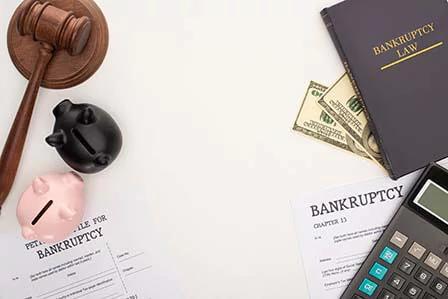Declaring bankruptcy can feel like hitting rock bottom, but it’s not the end of the road. While the process can be stressful and overwhelming, it can also offer a fresh start. Life after bankruptcy involves taking deliberate steps to rebuild your credit, manage your finances wisely, and secure a stable financial future. In this article, we’ll guide you through essential strategies and practical tips to help you navigate life after bankruptcy successfully.
1. Understanding the Impact of Bankruptcy on Your Credit
Bankruptcy has a significant impact on your credit score, and it will remain on your credit report for 7 to 10 years, depending on the type. Understanding this impact is the first step in moving forward. While it’s a setback, remember that your credit score is not permanent and can be rebuilt with time and effort.
2. Creating a Budget to Manage Your Finances
After bankruptcy, budgeting becomes more critical than ever. Creating a budget helps you manage your income, track your expenses, and avoid falling back into debt. Start by listing your income sources and essential expenses like housing, utilities, and food. Allocate funds for savings and emergency expenses to prevent future financial hardships.
3. Establishing an Emergency Fund
One of the reasons many people end up in bankruptcy is the lack of an emergency fund. To avoid this pitfall, prioritize saving a portion of your income regularly. Even a small emergency fund can provide a cushion during unexpected expenses, reducing the need to rely on credit cards or loans, which can lead to further debt.
4. Obtaining a Secured Credit Card
Rebuilding credit after bankruptcy involves demonstrating responsible credit use. A secured credit card is an excellent starting point, as it requires a deposit that serves as your credit limit. Use the card for small, manageable purchases, and pay off the balance in full each month to show that you can handle credit responsibly.
5. Paying Your Bills on Time
Timely bill payments are crucial to rebuilding your credit score. Payment history is one of the most significant factors affecting your credit score, so set up reminders or automatic payments to ensure you never miss a due date. Consistently paying bills on time demonstrates reliability and positively impacts your credit report.
6. Monitoring Your Credit Report Regularly
Regularly monitoring your credit report allows you to track your progress and identify any inaccuracies that may affect your score. You’re entitled to a free credit report annually from the three major credit bureaus: Experian, TransUnion, and Equifax. Check for errors and dispute any inaccuracies to keep your credit report accurate.
7. Avoiding High-Interest Loans and Payday Lenders
In the aftermath of bankruptcy, you may be tempted by high-interest loans or payday lenders, but these can trap you in a cycle of debt. These loans often come with exorbitant interest rates and unfavorable terms. Instead, focus on building an emergency fund and using credit responsibly to avoid needing these types of loans.
8. Seeking Professional Financial Advice
If you’re unsure where to start or how to manage your finances post-bankruptcy, seeking professional advice can be a wise investment. Financial advisors or credit counselors can provide tailored guidance, help you create a budget, and offer strategies to rebuild your credit. They can also help you set realistic financial goals and develop a plan to achieve them.
9. Setting Realistic Financial Goals
Rebuilding your financial future requires setting realistic and achievable financial goals. Start small with goals like saving a specific amount each month or paying off a certain debt. Gradually increase your goals as your financial situation improves. Clear, achievable goals provide motivation and a roadmap for your financial recovery.
10. Staying Positive and Patient During the Rebuilding Process
Rebuilding your credit and financial future after bankruptcy is a journey that requires time, patience, and persistence. It’s normal to feel discouraged at times, but maintaining a positive outlook can make the process easier. Celebrate small victories along the way, and remind yourself that each step brings you closer to financial stability and a brighter future.
Conclusion
Life after bankruptcy isn’t easy, but it’s entirely possible to rebuild your credit and secure a stable financial future. By understanding the impact of bankruptcy, managing your finances wisely, and taking proactive steps to improve your credit score, you can overcome this challenge and move forward with confidence. Remember, the journey to financial recovery is a marathon, not a sprint—stay committed, stay patient, and your efforts will pay off in the long run.

